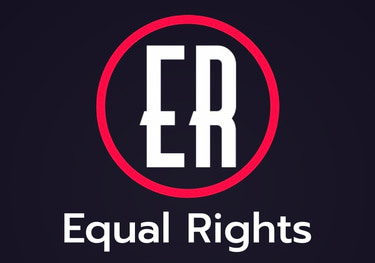Climate Change and Disability Rights:
Ensuring Inclusivity in Disaster Planning
Kylo B
6/14/2024
Climate Change and Disability Rights: Ensuring Inclusivity in Disaster Planning
Climate change has intensified the frequency and severity of natural disasters, posing significant challenges to communities worldwide.
Among those most affected are people with disabilities, who often face unique barriers during such events.
Inclusive disaster planning is crucial to ensure the safety, well-being, and dignity of individuals with disabilities in the face of climate-related disasters.
The Unique Challenges Faced by People with Disabilities
Physical Barriers
People with physical disabilities may encounter difficulties in evacuating during a disaster due to:
Limited Mobility: Individuals using wheelchairs, walkers, or other mobility aids may struggle with inaccessible evacuation routes and transportation.
Inadequate Facilities: Emergency shelters and temporary housing may lack accessible bathrooms, entrances, and living spaces.
Communication Barriers
Effective communication is vital during a disaster, yet people with disabilities often face challenges such as:
Hearing Impairments: Individuals who are deaf or hard of hearing may miss critical emergency announcements and instructions if they are not provided in sign language or other accessible formats.
Visual Impairments: Those who are blind or have low vision may find it difficult to navigate unfamiliar environments or follow visual cues during an evacuation.
Cognitive and Sensory Barriers
Individuals with cognitive or sensory disabilities may experience increased vulnerability due to:
Complex Instructions: Emergency procedures that are complex or not clearly communicated can be difficult for individuals with intellectual or developmental disabilities to understand and follow.
Sensory Overload: Loud noises, flashing lights, and crowded spaces common in disaster scenarios can be overwhelming for those with autism or other sensory processing disorders.
Health and Medical Needs
People with disabilities often have specific health and medical needs that must be addressed during a disaster, including:
Medical Equipment: Dependence on equipment such as ventilators, dialysis machines, or electric wheelchairs, which require power and maintenance.
Medications: The need for a continuous supply of medications that may be disrupted during evacuations or in emergency shelters.
Importance of Inclusive Disaster Planning
Legal and Ethical Imperatives
Inclusive disaster planning is not only a moral obligation but also a legal requirement under various national and international frameworks:
Americans with Disabilities Act (ADA): Requires that emergency preparedness and response programs be accessible to individuals with disabilities.
United Nations Convention on the Rights of Persons with Disabilities (CRPD): Emphasizes the right to protection and safety during emergencies and humanitarian crises.
Enhancing Community Resilience
By incorporating the needs of people with disabilities into disaster planning, communities can enhance overall resilience and ensure that no one is left behind. Inclusive planning benefits everyone by:
Improving Accessibility: Making infrastructure and communication more accessible benefits all community members, including the elderly and those with temporary disabilities.
Fostering Social Cohesion: Inclusive planning promotes a sense of community and mutual support, which is crucial during and after a disaster.
Strategies for Inclusive Disaster Planning
Community Engagement
Involving people with disabilities in disaster planning processes ensures that their needs and perspectives are considered:
Advisory Committees: Establishing advisory committees composed of individuals with disabilities and their advocates to provide input on emergency plans.
Community Workshops: Conducting workshops and simulations to identify potential barriers and develop practical solutions.
Accessible Communication
Ensuring that all emergency information is accessible to people with disabilities is vital:
Multi-Format Alerts: Providing emergency alerts in multiple formats, including text, audio, sign language, and Braille.
Training for Responders: Training emergency responders in effective communication techniques with individuals who have disabilities.
Infrastructure and Transportation
Creating accessible infrastructure and transportation options is crucial for effective evacuation and sheltering:
Accessible Routes: Designing evacuation routes that accommodate wheelchairs and other mobility aids.
Inclusive Shelters: Ensuring that emergency shelters are equipped with accessible facilities and staffed with personnel trained to assist individuals with disabilities.
Health and Medical Support
Addressing the specific health and medical needs of people with disabilities during disasters includes:
Medical Supply Kits: Encouraging individuals to maintain emergency kits with essential medications and medical supplies.
Power Solutions: Providing backup power solutions for medical equipment dependent on electricity.
Policy and Advocacy
Advocating for policies that prioritize the needs of people with disabilities in disaster planning is essential:
Inclusive Policies: Developing and implementing policies that mandate the inclusion of disability considerations in all stages of disaster management.
Funding and Resources: Allocating adequate funding and resources to support inclusive disaster preparedness and response initiatives.
Case Studies
Hurricane Katrina (2005)
Hurricane Katrina highlighted the severe consequences of inadequate disaster planning for people with disabilities:
Evacuation Failures: Many individuals with disabilities were unable to evacuate due to inaccessible transportation and shelters.
Response Gaps: Emergency responders lacked training and resources to assist people with specific needs, leading to preventable injuries and deaths.
Japan Earthquake and Tsunami (2011)
The 2011 earthquake and tsunami in Japan demonstrated the importance of inclusive disaster planning:
Community Involvement: Japanese communities that included people with disabilities in planning and drills were better prepared to support vulnerable individuals during the disaster.
Technology Integration: Use of technology, such as early warning systems accessible to people with hearing impairments, improved response times and outcomes.
Climate change is increasing the frequency and severity of natural disasters, disproportionately impacting people with disabilities. Ensuring inclusivity in disaster planning is essential to protect the health, safety, and dignity of these individuals. By engaging communities, enhancing communication, creating accessible infrastructure, addressing health needs, and advocating for inclusive policies, we can build resilient communities that leave no one behind.
